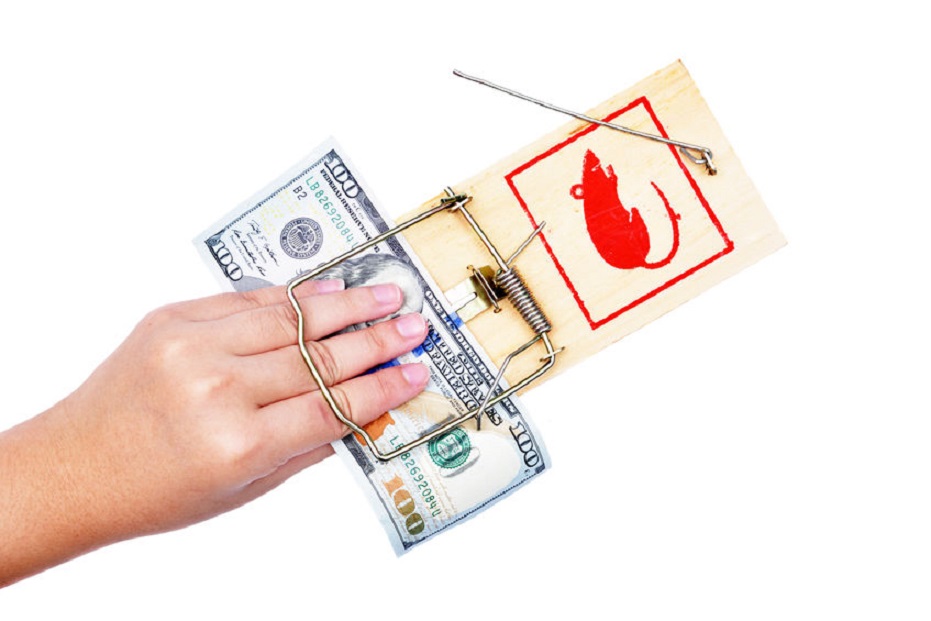Blogs
In a previous article, Wynn at Law, LLC, highlighted why the holidays are an ideal time to discuss your estate planning needs. The old adage ‘there’s no time like the present’ holds true with estate planning. So, here is a little more detail on the most common, and sometimes overlooked, planning tool: The Will.
There are three types of wills about which you should give some thought. The Last Will and Testament is what most people know about and refer to generally as a “Will.” In addition to the Last Will and Testament, there is also a Living Will and a Pourover Will.
The Last Will and Testament
There are dozens of online templates that suggest you can do this yourself. The problem with that is simple: How many have you done? An experienced attorney will help you create a legally binding document that specifically suits your needs, expresses what your final wishes are, and is tailored to Wisconsin law. That’s so important, because the tool speaks for you after you pass on, directing how you want assets divided and appointing who will be in charge of acting on your estate’s behalf.
The Living Will
The Last Will and Testament becomes effective at your passing, while the Living Will speaks for you when you are unable to speak for yourself due to injury or illness. This document makes known your wishes regarding life prolonging medical treatments. This tool, also called an advanced directive, is every bit as important as the Last Will and Testament. However, a University of Pennsylvania Philadelphia study found that less than a third of adults have a Living Will.
The Pourover Will
We’re covering Trusts next in this series, but you should know that this particular tool can save the day for your loved ones. When you forget or neglect to add all property into your planning documents over the years– and people do forget to go back and revise their estate plan when circumstances change – this tool puts the forgotten property into a Trust. This tool got its name because any assets you failed to title into your trust prior to your passing will “pour over” into the trust after you are gone.
Stay up to date
You’re going to want to review all of these Wills and your wishes periodically, too, because ‘life happens.’ In the following two articles on the Estate Planning Toolbox, Wynn at Law, LLC, guides you through Trusts and Powers of Attorney.
The post Your Estate Planning Toolbox: The Will appeared first on Wynn at Law, LLC.
In a previous article, Wynn at Law, LLC, highlighted why the holidays are an ideal time to discuss your estate planning needs. The old adage ‘there’s no time like the present’ holds true with estate planning. So, here is a little more detail on the most common, and sometimes overlooked, planning tool: The Will.
There are three types of wills about which you should give some thought. The Last Will and Testament is what most people know about and refer to generally as a “Will.” In addition to the Last Will and Testament, there is also a Living Will and a Pourover Will.
The Last Will and Testament
There are dozens of online templates that suggest you can do this yourself. The problem with that is simple: How many have you done? An experienced attorney will help you create a legally binding document that specifically suits your needs, expresses what your final wishes are, and is tailored to Wisconsin law. That’s so important, because the tool speaks for you after you pass on, directing how you want assets divided and appointing who will be in charge of acting on your estate’s behalf.
The Living Will
The Last Will and Testament becomes effective at your passing, while the Living Will speaks for you when you are unable to speak for yourself due to injury or illness. This document makes known your wishes regarding life prolonging medical treatments. This tool, also called an advanced directive, is every bit as important as the Last Will and Testament. However, a University of Pennsylvania Philadelphia study found that less than a third of adults have a Living Will.
The Pourover Will
We’re covering Trusts next in this series, but you should know that this particular tool can save the day for your loved ones. When you forget or neglect to add all property into your planning documents over the years– and people do forget to go back and revise their estate plan when circumstances change – this tool puts the forgotten property into a Trust. This tool got its name because any assets you failed to title into your trust prior to your passing will “pour over” into the trust after you are gone.
Stay up to date
You’re going to want to review all of these Wills and your wishes periodically, too, because ‘life happens.’ In the following two articles on the Estate Planning Toolbox, Wynn at Law, LLC, guides you through Trusts and Powers of Attorney.
The post Your Estate Planning Toolbox: The Will appeared first on Wynn at Law, LLC.
Mortgage Law Group and Consumer First Legal Group to pay $59 Million for Scamming Consumers
$59 million dollar judgment for deliberately scheming to evade the law and cause harm to their clients
 According to an article in news.bloomberglaw.com, 11/6/19, Consumer Financial Protection Bureau “CFPB” won a $59 Million dollar judgment (restitution and civil penalties) against The Mortgage Law Group, LLP, Consumer First Legal Group, LLC, Thomas G. Macey, Jeffery J. Aleman, Jason E. Searns and Harold E. Stafford (case 3:14-cv-00513-WMC, order filed 11/4/19 (see “Read More” link below for the Order).
According to an article in news.bloomberglaw.com, 11/6/19, Consumer Financial Protection Bureau “CFPB” won a $59 Million dollar judgment (restitution and civil penalties) against The Mortgage Law Group, LLP, Consumer First Legal Group, LLC, Thomas G. Macey, Jeffery J. Aleman, Jason E. Searns and Harold E. Stafford (case 3:14-cv-00513-WMC, order filed 11/4/19 (see “Read More” link below for the Order).
This lawsuit took almost five years to find some final (we can only hope) resolution
This lawsuit started in 2014, wound through at least two bankruptcies, multiple orders to finally conclude on November 4, 2019, that CFLG I and II, Harold Stafford, Thomas Macey, Jeffery Aleman, and Jason Searns must disgorge “ill-gotten gains”. Neither company is currently in operation, plus Macey and Aleman have had their law licenses suspended.
“Defendants used fraudulent misrepresentations to dupe customers into purchasing in advance a service that they could have received for free”
From the Order: “Accordingly, the court finds that restitution is warranted where consumers (1) were charged advanced fees that were specifically prohibited by regulation, (2) were enticed to do so through various misrepresentations, and (3) received no measurable benefit for payment of those fees. Specifically, this results in the awards as follows against the respective defendants:
- TMLG, Macey, Aleman, and Searns are jointly and severally liable for restitution in the amount of $18,716,725.78, plus certain net revenue, for the advance fees that TMLG (The Mortgage Law Group) collected from consumers.
- CFLG (Consumer First Legal Group), Macey, and Aleman Searns are jointly and severally liable for restitution in the amount of $2,897,566 for the advanced fees that CFLG II collected from consumers.
- Stafford and CFLG are jointly and severally liable for restitution in the amount of $94,730 for the advanced fees that CFLG I collected from consumers.
MUSINGS FROM DIANE:
 I know there are evil people stealing from the innocent. But I see red hearing that a lawyer knowingly ripping off their clients. Lying, cheating and stealing from your clients is like your doctor giving you a prescription because he/she gets a kick-back from the drug manufacturer. Everyone has a right to rely on their lawyer or doctor.
I know there are evil people stealing from the innocent. But I see red hearing that a lawyer knowingly ripping off their clients. Lying, cheating and stealing from your clients is like your doctor giving you a prescription because he/she gets a kick-back from the drug manufacturer. Everyone has a right to rely on their lawyer or doctor.
A doctor has a duty to cause no harm to their patients and a lawyer has a duty to put their client’s interests before their own. Mistakes happen, that is understandable. But to intentionally harm someone is an unspeakable sin and that person will certain find his or her way to prison or hell (or hopefully both).
How Can I Help You?
The post Mortgage Law Group to pay $59 million-scammed consumers appeared first on Diane L. Drain - Phoenix Bankruptcy & Foreclosure Attorney.
5 Signs an Online Loan is a Debt Trap
Lenders use abusive or unfair practices to trap low income into a never-ending cycle of debt. Learn to spot the scams:
 The goal of a predatory loan (such as payday loans) is to trap the borrower in a nightmare of never-ending debt. The lenders know that no one is watching or, in some cases, cares that the poor are preyed upon by these unscrupulous lenders. Those lenders hope that their schemes to keep the poor paying outrageous interest rates, which forces them to take out more payday loans. There are a few states taking action – see State Payday Loan Reform from Pew Charitable Trusts, a nonprofit public interest group.
The goal of a predatory loan (such as payday loans) is to trap the borrower in a nightmare of never-ending debt. The lenders know that no one is watching or, in some cases, cares that the poor are preyed upon by these unscrupulous lenders. Those lenders hope that their schemes to keep the poor paying outrageous interest rates, which forces them to take out more payday loans. There are a few states taking action – see State Payday Loan Reform from Pew Charitable Trusts, a nonprofit public interest group.
The following are highlights from an article by Annie Millerbernd of Nerd Wallet, November 19, 2019
Five signs of a predatory loan:
- No Credit Check Ads. The lenders make it as easy a possible for the unwary borrower to get trapped in the never-ending loan cycle.
- Focus on Monthly Payments. Like a magician trying to distract you – the lender advertises low monthly payments but hides the length of the loan or very, very high-interest rates.
- Sky-High Rates. A bad lender is one that hides the interest rate on its website or advertisement. They hope to distract you by flashing signs and soothing language offering to solve all your problems (I call this the drug dealer’s promise). There are reports of interest rates 300% to 700%. For instance, if you borrow $10, you have to repay $50.
- Excessively Long or Short Repayment Periods. Many predatory loans result in the borrower paying more than they originally borrowed (sometimes as much at 5-7 times more).
- All-in-one Payment Requirements. According to Alex Horowitz, a senior research office with Pew Charitable Trusts, “the average payday loan takes 36% of a borrower’s paycheck.” If the borrower cannot make the payment (few ever can), they take another loan to pay the first loan – the cycle goes on for years until the borrower finally sells their only vehicle to pay the debt or files bankruptcy.
MUSINGS FROM DIANE:
 Desperate people do desperate things. Some rob to feed their family. Others gamble their entire paycheck with the hopes of winning enough to pay the mortgage. What most don’t do is ask for help or seek informed advice from those who care.
Desperate people do desperate things. Some rob to feed their family. Others gamble their entire paycheck with the hopes of winning enough to pay the mortgage. What most don’t do is ask for help or seek informed advice from those who care.
Is credit important in our economy? Absolutely, but should we be more concerned with buying the latest cell phone or owning an expensive house or car (just to impress friends or family), or focus on buying only what we need and save for unexpected expenses.
Good information is always available, if only you ask. But, you must use common sense. Never assume any advertisement is truthful. Typically, the goal of a sale is to get as much of your money as possible, for the least cost to the seller.
How Can I Help You?
The post 5 Signs an Online Loan is a Debt Trap appeared first on Diane L. Drain - Phoenix Bankruptcy & Foreclosure Attorney.
Premier Student Loan Center, SL Account Management, Financial Preparation Services accused of deceiving federal-student-loan borrowers
CFPB GOES AFTER STUDENT LOAN DEBT RELIEF COMPANIES FOR DECEPTIVE PRACTICES
Who is the Consumer Financial Protection Bureau (CFPB) suing?
They are: Consumer Advocacy Center Inc., which does business as Premier Student Loan Center; True Count Staffing Inc., also known as SL Account Management; and Prime Consulting LLC, which is known as Financial Preparation Services. Defendants also include Albert Kim, Kaine Wen, and Tuong Nguyen.
The Bureau alleges that since at least 2015, the debt-relief companies deceived thousands of federal-student-loan borrowers and charged over $71 million in unlawful advance fees in connection with the marketing and sale of student-loan debt-relief services to consumers.
 As described in the complaint, the Bureau alleges that Premier, along with its company co-defendants, violated the Consumer Financial Protection Act of 2010 (CFPA) and the Telemarketing Sales Rule (TSR) by making deceptive representations about the companies’ student-loan debt-relief and modification services. Specifically, the complaint alleges that Premier charged and collected improper advance fees before consumers had received any adjustment of their student loans or made any payment toward such adjusted loan. The Bureau also alleges that the defendants engaged in deceptive practices by misrepresenting: the purpose and application of fees charged by the companies, their ability to obtain loan forgiveness, and their ability to lower consumers’ monthly payments.
As described in the complaint, the Bureau alleges that Premier, along with its company co-defendants, violated the Consumer Financial Protection Act of 2010 (CFPA) and the Telemarketing Sales Rule (TSR) by making deceptive representations about the companies’ student-loan debt-relief and modification services. Specifically, the complaint alleges that Premier charged and collected improper advance fees before consumers had received any adjustment of their student loans or made any payment toward such adjusted loan. The Bureau also alleges that the defendants engaged in deceptive practices by misrepresenting: the purpose and application of fees charged by the companies, their ability to obtain loan forgiveness, and their ability to lower consumers’ monthly payments.
Never put your student loan in forbearance without understanding the serious consequences of that choice.
The Bureau also alleges that the defendants failed to inform consumers that the companies automatically request that consumers’ loans be placed in forbearance so that consumers can better afford the companies’ significant fees and that the companies submit false information to student-loan servicers in loan-adjustment applications in an effort to qualify consumers for lower monthly payments. The Bureau also alleges the individuals substantially assisted the student-loan debt-relief companies.
Copy of Complaint
![]()
MUSINGS FROM DIANE:
 What is the future of our country worth to you? Are you someone who believes that as long as you got through life, then you don’t care about anyone else? Or are you someone who believes that our future is worth focusing on now. That we should make sure our future has educated leaders and skilled business men and women? Right now the only people who can afford a good college education are those from wealthy families (many of these young people are self-center and entitled) or those who are willing to take on substantial student loans (even if they are working while going to school).
What is the future of our country worth to you? Are you someone who believes that as long as you got through life, then you don’t care about anyone else? Or are you someone who believes that our future is worth focusing on now. That we should make sure our future has educated leaders and skilled business men and women? Right now the only people who can afford a good college education are those from wealthy families (many of these young people are self-center and entitled) or those who are willing to take on substantial student loans (even if they are working while going to school).
Student loans have become a scam – the cost to go to college has increased way above the increase in cost of living. Colleges have become profit centers, rather than bastions committed to educating our future leaders. College advisers encourage students to borrow as much money as possible because the college makes a higher profit.
![]() Price of College Increasing Almost 8 Times Faster Than Wages
Price of College Increasing Almost 8 Times Faster Than Wages
Here’s how much more expensive it is for you to do to college than it was for your parents
The post Deceiving Student Loan Borrowers: Premier Management & Financial Preparation Services appeared first on Diane L. Drain - Phoenix Bankruptcy & Foreclosure Attorney.
Trump Administration Wants to Remove Interest Rate Limits and Sacrifice the Consumer
New rule removes interest rate limits on subprime and payday lenders
 According to an article in Credit Slips, posted by Adam Levitin, the Trump administration has just proposed a rule that declares open season on consumers for subprime lenders. The Office of Comptroller of the Currency and the Federal Deposit Insurance Corporation have released parallel proposed rulemakings that will effectively allow subprime consumer lending that is not subject to any interest rate regulation, including by unlicensed lenders (specifically payday lenders).
According to an article in Credit Slips, posted by Adam Levitin, the Trump administration has just proposed a rule that declares open season on consumers for subprime lenders. The Office of Comptroller of the Currency and the Federal Deposit Insurance Corporation have released parallel proposed rulemakings that will effectively allow subprime consumer lending that is not subject to any interest rate regulation, including by unlicensed lenders (specifically payday lenders).
The proposed rule provides that lenders may charge whatever interest they want (currently rates are 300% and up).
The Trump administration’s proposal would allow payday lenders to make loans in every state without regard to state usury laws (or state licensing requirements and thus enforcement of other state consumer protection laws)…just as long as those lenders partner with a bank.
The author doubts there is legal authority for this proposed rule, but these payday lenders and others will get away with ignoring state law and other consumer protections until a court orders them to stop abusing the consumer. How many years will that take? How many vulnerable consumers’ will sacrifice their financial futures while waiting for the courts to act?
![]()
MUSINGS FROM DIANE:
 The banks won’t help most consumers with financial problems, so the only option may be a payday or sub-prime lender in order to pay rent or buy food. Until now, there were some state laws to protect the consumers. These laws or rules had limits on interest rates, terms for the loans, etc. Many states ran payday and sub-prime lending out that state. Then payday and sub-prime lenders took their business on-line, with the hopes of avoiding state regulation. Sometimes that worked, sometimes not.
The banks won’t help most consumers with financial problems, so the only option may be a payday or sub-prime lender in order to pay rent or buy food. Until now, there were some state laws to protect the consumers. These laws or rules had limits on interest rates, terms for the loans, etc. Many states ran payday and sub-prime lending out that state. Then payday and sub-prime lenders took their business on-line, with the hopes of avoiding state regulation. Sometimes that worked, sometimes not.
Because these borrowers are mostly elderly, those on fixed income and minorities, they don’t have the financial power to pass new laws, therefore little has been done to protect them. This proposed Trump administrative rule exposes these vulnerable consumers even more than they are today. It empowers the payday and sub-prime lender the freedom to treat desperate borrowers anyway they like. If the payday and sub-prime lenders get in trouble, they just close their doors and open new businesses under another name.
How Can I Help You?
The post Trump Removes Interest Rate Limits and Sacrifices the Consumer appeared first on Diane L. Drain - Phoenix Bankruptcy & Foreclosure Attorney.
Dealing with Debt Collection Scams – several videos from Consumer Financial Protection Bureau
Dealing with debt collection issues can be challenging—especially when you’re not sure if the person you’re being contacted by is a legitimate debt collector or someone trying to scam you.
![]()
♦ “Protect Yourself From Debt Collection Scammers”
♦ “What is the best way to negotiate a settlement with a debt collector?”
♦ “3 Ways to Build Your Credit Score”
♦ “What homebuyers need to know about mortgage scams”
♦ “Meet Ms. Drain and Suggestions on How to Hire an Attorney”
MUSINGS FROM DIANE:
 Why do we have to protect ourselves from people intent on taking what is not theirs? The only answer must be that they live in hell and hope to bring everyone else into that life so they feel better about themselves. How do I deal with these scheming demons? I never trust someone who calls me to solve my problems (they are just salesmen looking for a quick dollar). Instead, I contact those I trust and ask for guidance or referrals. Next, I trust my gut and ask lots of questions. Most importantly, I surround myself with people who follow the golden rule “do unto others as you would have them do unto you”.
Why do we have to protect ourselves from people intent on taking what is not theirs? The only answer must be that they live in hell and hope to bring everyone else into that life so they feel better about themselves. How do I deal with these scheming demons? I never trust someone who calls me to solve my problems (they are just salesmen looking for a quick dollar). Instead, I contact those I trust and ask for guidance or referrals. Next, I trust my gut and ask lots of questions. Most importantly, I surround myself with people who follow the golden rule “do unto others as you would have them do unto you”.
How Can I Help You?
The post How to Determine Debt Collection Scam appeared first on Diane L. Drain - Phoenix Bankruptcy & Foreclosure Attorney.
It's almost impossible to get rid of student loan debt when filing for bankruptcy, but help may be on the way
From: Business Insider
By: Mike Brown,LendEDU
https://www.businessinsider.com/loan-debt-student-borrowers-bankrupcy-relief-act-2019-11
"A lawsuit charging that the city sold 400 taxi medallions under false pretenses about their worth and then breached its contract by letting ride-hail operators enter the market and undermine medallion values has been certified as a class-action suit.
The suit, brought by five medallion owners and filed in early October, could now apply to more than 150 medallion owners, according to Daniel Ackman, one of the lawyers for the plaintiffs. The decision in State Supreme Court in Queens County was delivered late last week.
The disputed medallions were bought at three auctions held by the Taxi and Limousine Commission in 2013 and early 2014—when prices were still astronomically high and Uber had barely dented the market. The sales netted the city $360 million.
Mystery buyer snaps up taxi medallions as prices fall further
Judge rules on taxi industry lawsuit: Compete with Uber or die
Cab drivers and owners get caught in the headlights of a troubled taxi lender
Ackman is asking for the city to take back the medallions from the auction winners and return the $360 million they paid for them. The medallions' prices ranged between $803,000 and $965,000 for independent medallions and $1.025 million and $1.259 million for corporate medallions, according to the suit.
Medallions are currently selling at private auctions for less than $150,000 apiece.
"Not once before the Auctions did the City warn prospective buyers that it was about to radically change the economics of the taxi industry by allowing a massive influx of new for-hire vehicles—principally cars hailed through electronic apps—that would decimate the value of the yellow taxi medallions," attorneys write in the suit. "Nor did the TLC disclose that it would license the e-hail taxis as “black cars” despite the fact that they did not qualify for these licenses. Instead, Defendants omitted this information which, had it been known, would have dissuaded potential Auction bidders."
Both the city and the plaintiffs have asked the court for summary judgment.
The city's law department and the Taxi and Limousine Commission did not respond immediately to a request for comment.
But in a related suit brought by Ackman that is currently before the same court, the city has argued that in its contracts with the medallion owners it made no claims "as to the present or future value of a medallion, or the present or future application of TLC rules."
The city also noted that the contracts did not imply an "obligation to protect [the medallion purchasers] from competition from app-based companies such as Uber, when their contracts explicitly said otherwise, and when Uber was already operating in the market at the time of their purchases."
A private-equity firm buying up taxi medallions could take on Lyft and Uber
The city and the TLC have a good record defending themselves from the claims of medallion owners who blame them for the plunge in medallion values. In one noted case in Queens Supreme Court in 2015, a judge ruled that an e-hail was a prearranged ride--essentially what black car services have always provided--and did not conflict with medallion owners' street-hail privileges.
Ackman maintains that his case is narrower than earlier suits, applying only to medallion owners who bought the assets directly from the city, and centers on the contractual relationship between them. It is also coming at a time when there is wider recognition of the hardships medallion owners have faced--highlighted by multiple suicides--and more interest among elected officials in taking steps to help them.
A favorable ruling "could have implications beyond this case," Ackman said. "It's possible if a judge says, 'Yes, the city's conduct destroyed the value of the medallions,' that could spur other actions by the city or the state.""
COLLEGE TUITION CLAWBACKS
Hoosiers struggling with debt often continue to fund college tuition payments for adult children attending a college or university. Unfortunately, if the parents subsequently file bankruptcy, a bankruptcy trustee (“usually a Chapter 7 Trustee”) has the power to try and recover the pre-petition tuition already paid to the college from the parent debtors’ assets. This is called a “clawback”. In Indiana, this can occur within four years of filing under bankruptcy law which incorporates the longer limitations period under Indiana. The goal of the “clawback” is commonly is to recover the tuition payments to a Chapter 7 bankruptcy trustee for distribution to creditors.
RESULTING ISSUES
While there has been a split of results in the underlying bankruptcy courts supporting the parents or Chapter 7 Trustee, recently the 1st Circuit has found that because the parents do not receive a direct economic benefit that was reasonably equivalent to the tuition payments, there is a basis for recovery of the funds. The problems that then arise are (1) Is the tuition liability part of the debts that get distribution from the trustee, (2) Does the college expect to repay the amount taken by the Trustee, (3) If not received already, how does it impact received your degree or transcript?
AVOIDING THE PROBLEM
There are some ways to avoid the issue that are good pointers regardless of whether or not you believe that bankruptcy may be in your future. Generally, the “clawback” only applies to tuition payments made on behalf of adult children. In Indiana, the age of majority is eighteen years of age. Obviously this can be confusing as the date for automatic emancipation is nineteen years of age and federally you can maintain insurance until age 26 for a child. Secondly, it applies to payments from debtors’ non exempt assets (and are not commingled with debtors’s other assets). It appears that signing a PLUS loan is fine as long as the funds are directly paid to the college or deposited into an account at the college that is controlled solely by the student. Courts have found that no transfer of the debtor’s property occurred, and therefore the payment could not be avoided. . Paying tuition from a 529 account or ROTH account is fine as well (again as long as the funds are directly paid to the college or deposited into an account at the college that is controlled solely by the student) from limitations on avoidance powers even before a determination of value.
CONTACT YOUR INDIANA BANKRUPTCY ATTORNEY
This area of law is evolving and you should check with a local bankruptcy attorney about your possible exposure prior to filing bankruptcy if you have paid tuition on behalf of an adult child in the prior four years.
__ATA.cmd.push(function() {
__ATA.initDynamicSlot({
id: 'atatags-26942-5dd330cecbb5e',
location: 120,
formFactor: '001',
label: {
text: 'Advertisements',
},
creative: {
reportAd: {
text: 'Report this ad',
},
privacySettings: {
text: 'Privacy settings',
}
}
});
});

 Updated daily, this blog will keep you informed on the latest bankruptcy news!
Updated daily, this blog will keep you informed on the latest bankruptcy news!  Learn more about how Bankruptcy works and what you need to know.
Learn more about how Bankruptcy works and what you need to know.